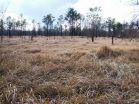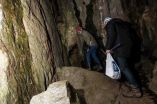(Press-News.org) Embracing "novel" ecosystems is dangerous, according to a new study by an international team.
Novel ecosystems arise when human activities transform biological communities through species invasions and environmental change. They are seemingly ubiquitous, and thus many policymakers and ecologists argue for them to be accepted as the "new normal"—an idea the researchers say is a bad one.
In the study, published in the September edition of the academic journal Trends in Ecology and Evolution, the international team argues that adopting novel ecosystems is based on faulty, data-deficient assumptions and a catchy schematic figure, not on robust, empirically tested science.
"Novel ecosystems yield unintended and perverse outcomes, and the concept provides 'license to trash' or 'get-out-of-jail card' for companies seeking to fast-track environmental licenses or to avoid front-end investment in research and restoration," said Dan Simberloff, an ecology and evolutionary biology professor at the University of Tennessee, Knoxville. "The concept may even provide incentives to governments to continue to ignore the long-term environmental and ecological negative impacts of business as usual with respect to sustainable development and natural resources management."
The authors warn that the "novel ecosystems" concept is not only an empty shell; it is also a real threat in terms of policy direction. It is tantamount to opening the floodgates to invasive species and abandoning ecosystems that have evolved historically over many millennia and the biodiverse communities they have created.
Instead, they call for applying the precautionary principles of conservation and restoration to re-establish or try to emulate the historical trajectories of our ecosystems, to allow restored systems to adapt to environmental changes while providing essential services to human populations.
The authors acknowledge barriers to restoration and conservation but note that they are sociological, political and economic, not ecological. Projects like the restoration of the jarrah forest near Perth and the sand dune plant communities of northern California demonstrate that with real determination and appropriate investment, restoration can work very effectively—even on utterly devastated landscapes.
Stuart Pimm, at Duke University, a conservation expert who was not involved in the study, said "Murcia and her colleagues have written a damning indictment of those who think anything will do when it comes to healing the damage we have done to our natural world."
Ecological restoration is making its way to the top of the agenda worldwide at the United Nations, the European Commission, development banks, the world's largest conservation organizations, and boardrooms of multinational resource corporations. Thirty years of research and development in the science of ecological restoration show it is possible to rehabilitate and restore degraded landscapes. Importantly, restoration makes scientific and political good sense as an investment whose benefits far outweigh its costs, write the authors.
INFORMATION:
Simberloff collaborated with lead author Carolina Murcia at the University of Florida and researchers from the Organization for Tropical Studies in Durham, North Carolina; Centre d'Ecologie Fonctionnelle et Evolutive in France; Missouri Botanical Garden; Pontificia Universidad Javeriana Seccional in Colombia; Kings Park and Botanic Garden in Australia; and the University of Western Australia.
International scientific team criticizes adoption of 'novel ecosystems' by policymakers
Embracing 'novel' ecosystems is dangerous, according to a new study by a team including a University of Tennessee, Knoxville, professor
2014-08-18
ELSE PRESS RELEASES FROM THIS DATE:
Visual 'gist' helps us figure out where a crowd is looking
2014-08-18
Have you ever seen a crowd of people looking off into the distance, perhaps toward a passing biker or up to the top of a building? There's a good chance you looked there, too, instantly, even without paying attention to the individuals in the group. How can we tell where a crowd is looking with so little effort?
Researchers at the University of California, Berkeley and the University of Denver have discovered that we rely on a specialized visual process known as "ensemble coding" to perceive where a crowd is looking. Their new study shows that we are able to tell where ...
Prioritizing suicide research can help lead to fewer suicide attempts and deaths
2014-08-18
Ann Arbor, MI, August 18, 2014 – In a new supplement to the September issue of the American Journal of Preventive Medicine, experts address the state of the science on suicide prevention and provide useful recommendations for research to inform effective suicide prevention. Suicide has been a challenging and perplexing public health issue to study as it has many dimensions and underlying factors. Although much is known about the patterns and potential risk factors of suicide, the national suicide rate does not appear to have dropped over the last 50 years.
This groundbreaking ...
IU study: Parents' vaccine intentions influenced by how benefits are communicated
2014-08-18
INDIANAPOLIS -- How do parents decide whether to vaccinate their child? In a study designed to formally look at the content of parent-targeted communications about the benefits of vaccination for measles, mumps and rubella, Indiana University School of Medicine investigators report that the framing of these messages influences parents' intentions to immunize their children.
The investigators report that parents who viewed informational material highlighting direct benefits to their own child were the most likely to subsequently indicate that they would have their baby ...
White, straight women leading surge in infertility treatments
2014-08-18
WASHINGTON — Heterosexual white women are twice as likely as racial or sexual minority women to obtain medical help to get pregnant, according to a recent study published by the American Psychological Association.
While income and lack of insurance only partially explained the lower number of racial minority women receiving fertility assistance, lack of insurance appeared to play a crucial role in whether lesbian and bisexual women received medical fertility help, especially in more recent years, according to the nationally representative study published in the APA journal ...
Environment and health experts commit to actions on climate change
2014-08-18
MONTREAL, August 15, 2014 — More than 500 delegates to the EcoHealth 2014 conference have issued a call to action to urgently and collaboratively address the impacts of climate change on the health of humans, animals and the global environment in light of the lack of a truly collective response to date.
Working through the International Association for Ecology and Health (IAEH), the 500 delegates from 62 countries, and the larger ecohealth community they reflect, have developed a vision and commitment to action that will bring together what is already being done to address ...
Stronger drunk driving laws lead to safer roads: Study
2014-08-18
Changes to British Columbia's laws against driving while impaired have reduced fatal crashes as well as ambulance calls and hospital admissions resulting from motor vehicle crashes, a new University of British Columbia study finds.
Researchers concluded that harsher penalties for impaired driving and speeding instituted by the B.C. government in September 2010 reduced crashes related to drinking and driving.
Automobile crashes declined 21 per cent, crash-related hospital admissions dropped 8 per cent and crash-related ambulance calls fell by 7.2 per cent. Based on ...
HSP72 confers protection in retinal ganglion cells and lateral geniculate nucleus neurons
2014-08-18
Optic nerve transection increased the expression of heat shock protein 72 (HSP72) in the lateral geniculate body, indicating that this protein is involved in the prevention of neuronal injury. Zinc sulfate and quercetin induced and inhibited the expression of HSP72, respectively. In a study reported by Dr. Ning Li and co-workers from the First Affiliated Hospital of Anhui Medical University, China, intraperitoneal injections of zinc sulfate, SP600125 (c-Jun N-terminal kinase inhibitor), or quercetin were performed on retinal ganglion cells in a Wistar rat model of chronic ...
Cholecystokinin octapeptide antagonizes apoptosis in retinal pigment epithelial cells
2014-08-18
Oxidative stress may cause retinal pigment epithelial (RPE) cell apoptosis. Nitric oxide and superoxide react to produce peroxynitrite, which, along with its derivatives, are strong oxidants. Cholecystokinin octapeptide-8 (CCK-8) can protect cholinergic neurons against basal forebrain lesion caused by brain injury. Research team at Hebei Province People's Hospital, China led by Dr. Yuan Liu treated human RPE cells with the oxidative stress inducer peroxynitrite, and evaluated the neuroprotective effects of CCK-8. Peroxynitrite triggered apoptosis in these cells, and increased ...
New discovery: Microbes create dripstones
2014-08-18
According to new research humble, microscopic organisms can create dripstones in caves. This illustrates how biological life can influence the formation of Earth's geology - and the same may be happening right now on other planets in space.
According to traditional textbooks dripstones are created by geological or geochemical processes with no influence from living organisms. But now scientists report that formation of dripstones can be a lot more complex than that: Sometimes microbes are responsible for the formation of these geological features.
The researchers from ...
Toothless 'dragon' pterosaurs dominated the Late Cretaceous skies
2014-08-18
A new study provides an exciting insight into the Late Cretaceous and the diversity and distribution of the toothless 'dragon' pterosaurs from the Azhdarchidae family. The research was published in the open access journal ZooKeys.
The Azhdarchidan pterosaurs derive their name from the Persian word for dragon - Aždarha. Interestingly, this derived and rather successful group of pterosaurs included some of the largest known flying animals of all times, with a wingspan reaching between 10 and 12 m.
'Dragon' pterosaurs had a worldwide distribution once and were the last ...
LAST 30 PRESS RELEASES:
Azacitidine–venetoclax combination outperforms standard care in acute myeloid leukemia patients eligible for intensive chemotherapy
Adding epcoritamab to standard second-line therapy improves follicular lymphoma outcomes
New findings support a chemo-free approach for treating Ph+ ALL
Non-covalent btki pirtobrutinib shows promise as frontline therapy for CLL/SLL
University of Cincinnati experts present research at annual hematology event
ASH 2025: Antibody therapy eradicates traces of multiple myeloma in preliminary trial
ASH 2025: AI uncovers how DNA architecture failures trigger blood cancer
ASH 2025: New study shows that patients can safely receive stem cell transplants from mismatched, unrelated donors
Protective regimen allows successful stem cell transplant even without close genetic match between donor and recipient
Continuous and fixed-duration treatments result in similar outcomes for CLL
Measurable residual disease shows strong potential as an early indicator of survival in patients with acute myeloid leukemia
Chemotherapy and radiation are comparable as pre-transplant conditioning for patients with b-acute lymphoblastic leukemia who have no measurable residual disease
Roughly one-third of families with children being treated for leukemia struggle to pay living expenses
Quality improvement project results in increased screening and treatment for iron deficiency in pregnancy
IV iron improves survival, increases hemoglobin in hospitalized patients with iron-deficiency anemia and an acute infection
Black patients with acute myeloid leukemia are younger at diagnosis and experience poorer survival outcomes than White patients
Emergency departments fall short on delivering timely treatment for sickle cell pain
Study shows no clear evidence of harm from hydroxyurea use during pregnancy
Long-term outlook is positive for most after hematopoietic cell transplant for sickle cell disease
Study offers real-world data on commercial implementation of gene therapies for sickle cell disease and beta thalassemia
Early results suggest exa-cel gene therapy works well in children
NTIDE: Disability employment holds steady after data hiatus
Social lives of viruses affect antiviral resistance
Dose of psilocybin, dash of rabies point to treatment for depression
Helping health care providers navigate social, political, and legal barriers to patient care
Barrow Neurological Institute, University of Calgary study urges “major change” to migraine treatment in Emergency Departments
Using smartphones to improve disaster search and rescue
Robust new photocatalyst paves the way for cleaner hydrogen peroxide production and greener chemical manufacturing
Ultrafast material captures toxic PFAS at record speed and capacity
Plant phenolic acids supercharge old antibiotics against multidrug resistant E. coli
[Press-News.org] International scientific team criticizes adoption of 'novel ecosystems' by policymakersEmbracing 'novel' ecosystems is dangerous, according to a new study by a team including a University of Tennessee, Knoxville, professor



